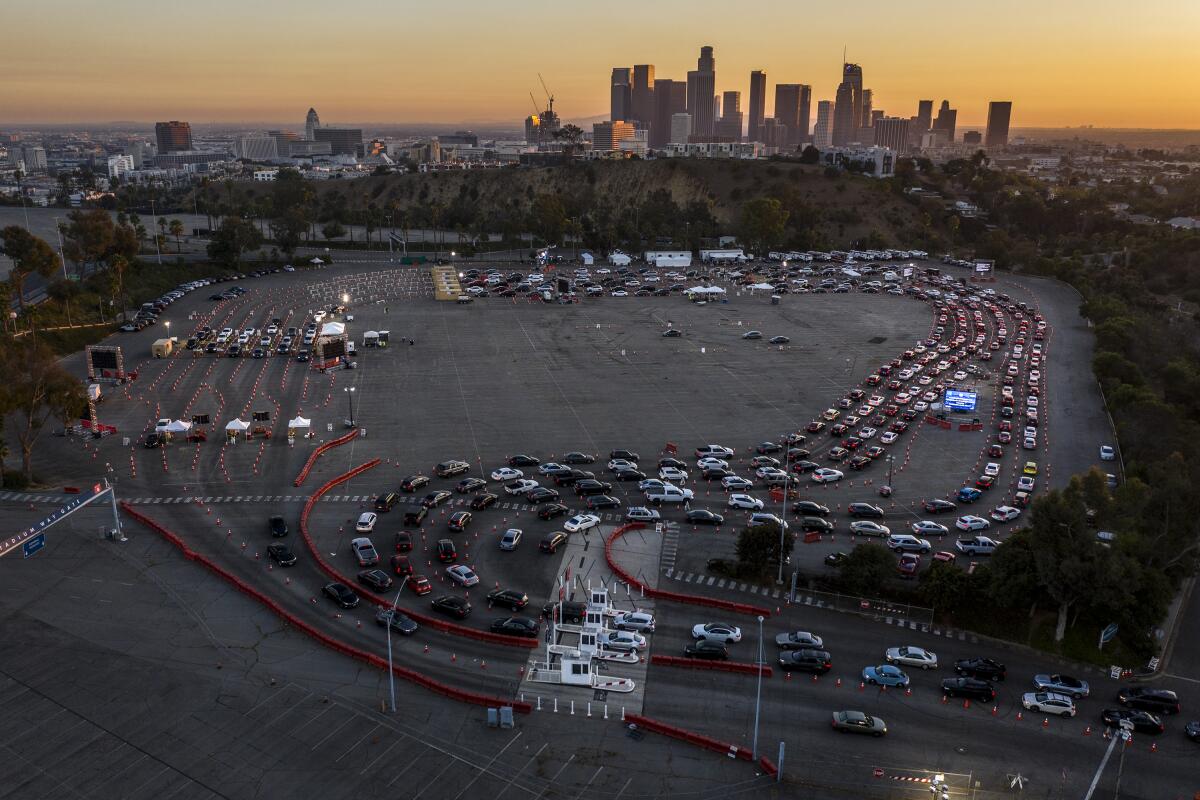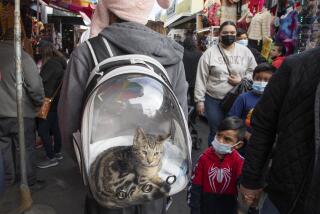COVID-19 curfews? Better than returning to total lockdown

- Share via
Are curfews coming to California? They could be as state and local leaders look for ways to slow the precipitously rising number of coronavirus infections and avoid the death that inevitably follows. If curfews can help avoid a return to the sweeping lockdowns of last spring, Californians should welcome them.
COVID-19 cases have been rising at an alarming rate this month, faster than any other time during the pandemic. In the first week of November, reported cases increased by 51.3%. It is the largest week-over-week increase yet — and by a wide margin. That’s on par with the national picture, where infections are rising so quickly that the U.S. could reach a quarter-million cases a day soon.
Gov. Gavin Newson announced Monday that he was throwing on the “emergency brake” and, starting Tuesday, rolling back the reopening steps taken by most California counties, ending indoor activities at restaurants, theaters, churches, gyms and other businesses. In addition, California is adopting tougher rules on face coverings, requiring them to be worn outside the home with only a few exceptions. Last week, California joined Oregon and Washington in announcing new travel restrictions, urging residents not to travel outside the state and those who arrive to quarantine for 14 days.
These are reasonable actions, but they may not be enough to stop the steady march of infections. It hasn’t worked so far in L.A. County, which has never left the state’s COVID-19 watchlist because Angelenos can’t seem to stop engaging in behavior that exposes more people to the virus. Public health officials say one of the most problematic sources of COVID-19 is social gatherings where people let down their guards, and their face masks, with friends and family.
Los Angeles County Public Health Director Barbara Ferrer said that she’s discussing curfews for businesses, among other restrictions, with county supervisors. The idea is to keep people from mingling at night and spreading COVID-19 while letting businesses stay open during the day, enabling them to hold on to at least some of their employees. “We may not like the rules right now,” Ferrer said Monday, “… but those are the rules that allow us to continue with our recovery.”
Newsom said he is looking at a broader statewide curfew as well, but plans first to study how curfews have worked in other states and countries to keep rates of transmission down. That may be difficult as there’s little evidence that curfews alone stop COVID-19 infections, though that may be because there hasn’t been time enough for proper study. Nevertheless, some places are trying them out. And if they can stave off a total lockdown, then by all means, let’s consider them.
If nothing else, they can help by reminding people that there’s still a serious health crisis going on. And maybe remind California leaders too? Last week Newsom was called out for attending the birthday party of a lobbyist at a high-end restaurant in Napa County that had more attendees than is recommended for personal gatherings. Even though it was outside and technically allowed under state guidelines, Newsom said that attending the gathering was a mistake. “The spirit of what I’m preaching all the time was contradicted, and I’ve got to own that,” Newsom said Monday, “And so I wanted to apologize.”
While curfews on businesses seem like a potentially helpful way to balance the need to protect public health against the interests of employers and their workers, a curfew on personal movement could backfire. Newsom specifically mentioned looking at Portugal, which prohibits people in several regions from leaving their home between 11 p.m. and 5 a.m. That kind of limit on personal freedom is bound to get substantial pushback and risk a wide disregard for the state guidelines by a public already weary of pandemic restrictions.
Ferrer said Monday that she didn’t think the surge in infections would ultimately lead to a reinstatement of the strict safer-at-home orders from earlier this year. Fingers crossed, but she added it is not out of the question if the infections reach the point at which hospitals are overrun.
We’d still rather avoid a full lockdown and all the associated economic damage that comes with it. The job falls to us now. All Californians need to recognize how important it is to follow the new rules and do their part to bring COVID-19 under control, before tougher and more painful restrictions become unavoidable.
More to Read
A cure for the common opinion
Get thought-provoking perspectives with our weekly newsletter.
You may occasionally receive promotional content from the Los Angeles Times.









